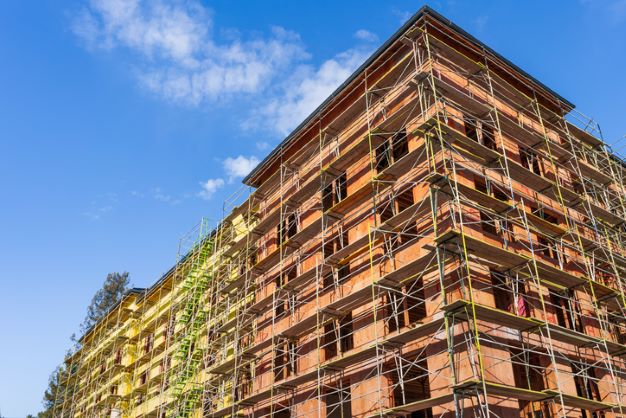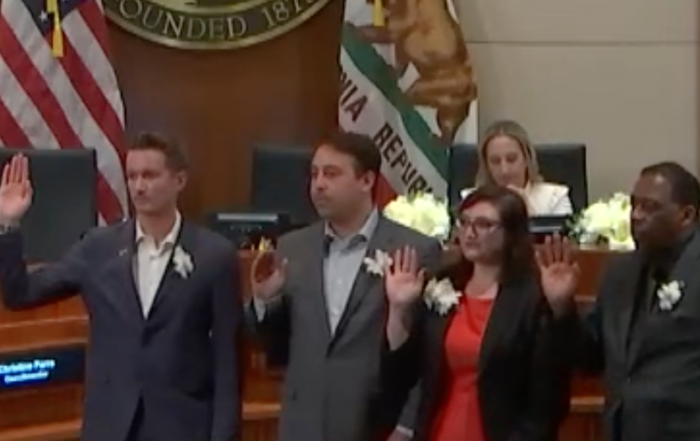For the first time in more than three months, the Santa Monica City Council met to try and finalize a Sixth Cycle Housing Element for the years 2021-2029 that would be acceptable to the state’s Housing and Community Development Department (HCD). Mayor Sue Himmelrich dubbed this agenda item, “The centerpiece of the evening.”
HCD deemed the draft Housing Element compliant with state law on September 6, with only minor notes on implementation dates and typographical errors. However, consequences would remain if the council didn’t act on Tuesday. Among them is a continued loss of state grant funding for affordable housing that the city has suffered since remaining out of compliance. In addition, the city is already seeing so-called “builder’s remedy” projects being approved without any right to object. These projects don’t undergo an approval process if they meet 20 percent on-site affordable units or low-income units, or 100 percent moderate-priced units – even if said project exceeds city zoning or maximums contained in the Land Use and Circulation Element (LUCE). Even further, if rezoning in the city is not complete by this coming Saturday, October 15, the state can initiate enforcement proceedings against the city.
Housing Commissioner Theresa Marasco was on hand to complain that the commission has essentially been shut out of the planning process. She said, “The Housing Commission has not been informed of this despite the fact that the Housing Commission is tasked with advising the city council on all matters related to housing in Santa Monica – particularly affordable housing.” She added, “Despite numerous requests of staff by multiple commissioners over many months, the Housing Commission was never informed of the Housing Element’s ongoing review process. Nor were we given an opportunity to participate in it.”
City staff defended their process, saying they broadly promoted the initiation of two working groups in 2019/2020 and invited all members of the public who wanted to participate to join. “We worked with staff and the city to help broadcast that,” said Jing Yeo with the planning department. “We made three presentations to the [Housing] Commission soliciting their input in 2021,” she added, also pointing out that the planning department went to the commission for more input on the affordable housing production program.
Councilmember Phil Brock asked Yeo about the consequences of voting “No” on the latest iteration of the Housing Element, citing a lot of pressure from his supporters to vote no and insist on the slow growth platform on which he ran in 2020. He was particularly interested in what could be done about 12 “builders remedy” projects that are in the pipeline. Councilmember Gleam Davis informed him that there is nothing the city can do, thus making passage of the Housing Element and getting it approved by HCD all the more important.
After hearing some more about the situation the city is facing, Brock said, “The part that I want to make as clear as possible is the authority to manage our city, in zoning matters, has largely been usurped by the State of California.”
Councilmember Christine Parra asked Yeo how we’re going to be able to plan for and afford needed infrastructure upgrades as we add thousands of new residents – including more police and firefighters, increases in student enrollment, and water self-sufficiency among them. Yeo pointed to the fact that cities still maintain a right to charge developers “impact fees” for their projects to help offset increased costs to cities. When Parra asked at what point the city can ask the state for help with these expenses, staff said the state will be offering several grants in recognition of what it’s asking of its municipalities.
“We, as a community, impose some pretty significant impact fees on them,” said Councilmember Gleam Davis. “In fact, that’s one of the things I hear about from people all the time – ‘Geez, your impact fees are big!’” Davis also pointed to the increase in tax revenue a larger population will bring as they shop for goods, and that this revenue can help pay for the increased services that would need to be offered like public safety personnel.
To a concern raised by Councilmember Lana Negrete regarding climate change and the increases in construction and housing, Davis said, “With regard to climate change, building more housing is one of the best things we can do to negate the impact of climate change. ” Davis cited the benefits of more infill housing, bringing people closer to their work in places like Santa Monica rather than commuting in from long distances. Davis shared that she would be voting yes after voting no on several other iterations of the draft Housing Element.
A motion to adopt this version, which the council hopes is the last, was moved by Councilmember Davis and seconded by Councilmember Parra. It was passed with a unanimous vote of 6-0. Mayor Pro Tem Kristin McCowan was absent.
Photo by Sundry Photography
Stay informed. Sign up for The Westside Voice Newsletter
By clicking submit, you agree to share your email address with Westside Voice. We do not sell or share your information with anyone.








